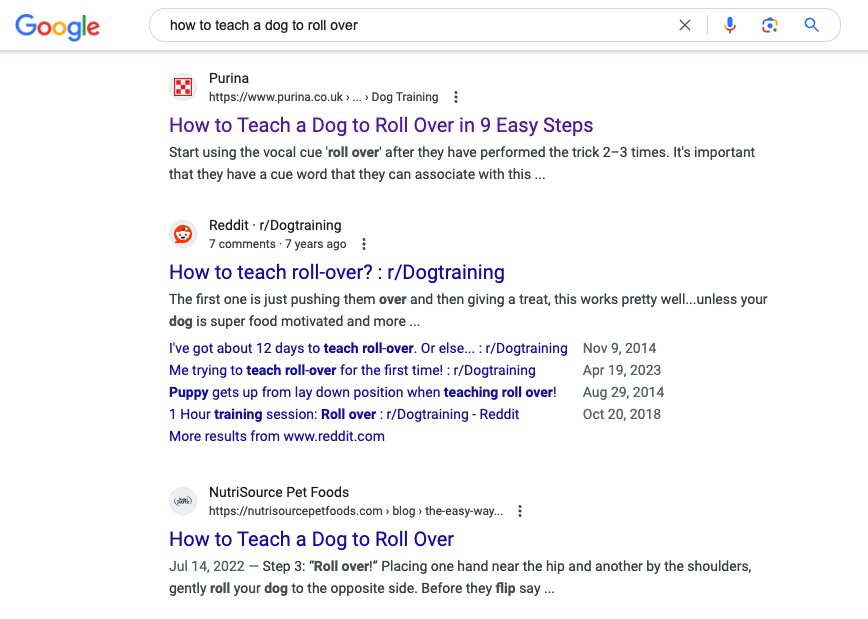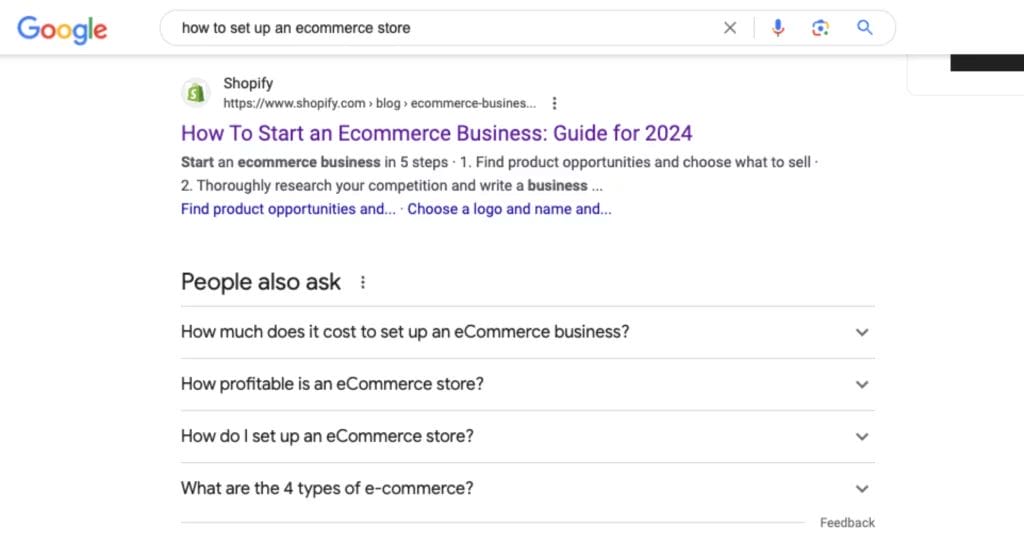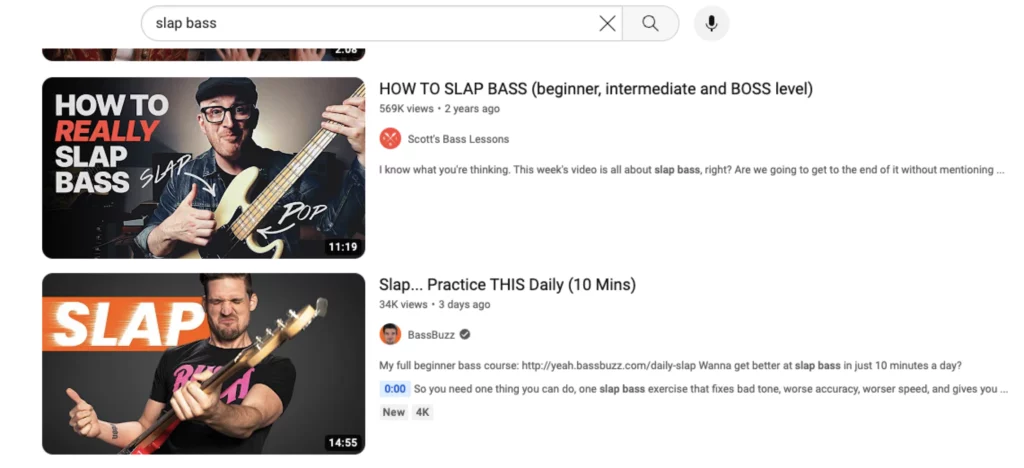
What if instead of going out and finding leads, you could get leads to come to you? That’s the idea behind inbound marketing—an essential marketing strategy for today’s businesses.
In this guide, we cover everything you need to get started with inbound marketing. Keep reading to learn about what inbound marketing is, how it can benefit your business, and the steps to take to launch your inbound marketing strategy.
Inbound marketing is an approach to marketing that focuses on attracting potential customers by providing valuable, relevant content rather than interrupting their experience with traditional advertising strategies. In the inbound methodology, marketers aim to provide value to potential customers throughout the buyer’s journey, which builds trust, establishes authority, and develops relationships over time.
Outbound marketing is a more traditional approach that involves pushing marketing messaging out to potential customers. In contrast, the inbound approach focuses on attracting potential customers to your business by creating content that will appeal to them.
Outbound marketing also typically reaches out to a wide audience in the hopes that the audience will include some prospects who fit your ideal customer profile. Inbound marketing takes a more targeted approach.
For example, outbound marketing involves channels like billboards, print advertising, trade shows, and cold calling. These methods all focus on putting your marketing content out there and reaching a wide audience. Inbound, on the other hand, involves creating and distributing online content that is relevant to your business and your target audience.
Although these methods take different approaches, they both aim to make leads aware of your brand, product, or service and eventually convert them into customers. In fact, you don’t have to choose one or the other. Inbound and outbound marketing can work together to create a holistic strategy.
Leads who discover your brand through outbound marketing may search your business online and read some of your content, which helps establish trust in your business. Leads who discovered your company through inbound marketing may see an outbound message that helps convince them to convert.
Inbound marketing has increasingly become the go-to strategy for businesses of all types and sizes. Consumers are inundated with disruptive ads, making it hard to stand out and making it more important to let interested customers find you through content that appeals directly to their interests.
The key benefits of using inbound marketing include:
By consistently creating quality content and increasing its visibility on channels like search engines and social media, you create more chances for potential customers to discover your business and become familiar with your brand.
As you create high-quality content, people will begin to see your brand as an authority in your industry, increasing trust and brand recognition.
Another major benefit of inbound marketing is the ability to reach prospects who fit your ideal customer profile. When you create content that’s relevant to the problems your business solves for customers, you’ll naturally attract people who could benefit from your products or services.
It’s much more cost-effective to get started with inbound marketing than outbound marketing, making inbound especially useful for small businesses. Outbound marketing with a high reach is typically very expensive, whereas you only have to invest time to start creating blog posts and optimizing them for search.
Because inbound marketing typically uses digital channels, accurately tracking results is much easier than with traditional marketing channels. With digital marketing, you can track search rankings, clicks, and other metrics and connect leads to specific campaigns.
Any business that wants to generate leads and build relationships with potential customers can benefit from inbound marketing.
Businesses of all types and sizes across industries can use inbound marketing. It’s especially beneficial for small businesses and companies that are just starting out because it requires a smaller upfront cost compared to other approaches and is ideal for building your reputation as a new business.
The B2B Marketer’s Toolkit collects 120+ of the best lead generation tips ever published on the Nutshell blog. Download it today!

Inbound marketing is often described in three phases—attract, engage, and delight. With these three phases working together, you can generate leads, increase sales, and keep customers happy, increasing retention.
Let’s take a look at these three stages of the inbound methodology:
The attract stage deals with drawing in potential customers with relevant, high-quality content.
To attract quality leads, create content that’s relevant to your customers’ interests and the value your business provides to your customers. This content isn’t meant to be salesy—it should provide real value to your audience.
For example, if you run a lawn care business, you might create blog posts, videos, and other content about how to care for your yard, choose flowers to plant, and more.
This stage also includes increasing your content’s visibility through strategies like search engine optimization (SEO), which aims to improve rankings in search, and sharing your content on social media.
In the engage stage, you interact with leads, further your relationships with them, and move them closer to becoming customers.
This stage begins with capturing lead information. You can accomplish this through forms on your site through which leads can sign up for a free trial, subscribe to an email newsletter, download a piece of content, or get significant value in some other way.
Then, you nurture the relationship through marketing methods like email marketing, social media, and personalized content, as well as engagement with your sales team.
In this stage, you may focus more on how your business can help meet the customer’s needs while continuing to provide value to them through your content.
The delight stage focuses on customer satisfaction and ensuring customers remain happy and engaged. Strategies in this stage often revolve around customer support and customer experience but can also include continuing to provide your customers with valuable, relevant content.
Strategies in this stage might include sending out customer surveys to gather feedback, offering trainings and webinars, and providing fast, friendly customer support.
Inbound marketing can involve various digital marketing channels, including:
Content marketing is one of the main digital marketing channels you’ll use as part of your inbound marketing strategy. Depending on your content and audience, you might create various types of content, such as:
Search engine optimization, or SEO, is another important element of an inbound marketing strategy. SEO involves optimizing your content to improve its visibility on search engine results pages. It’s important to pair content marketing with SEO because optimizing for search helps your audience find the quality content you create.
Marketers can use social media in different ways throughout all three stages of the inbound marketing methodology.
In the attract stage, you can use social media to share your content and increase its visibility. In the engage stage, you can interact with followers and build relationships. And in the delight stage, you can use social media to answer customer questions, announce product updates, and provide helpful information.
Email marketing may be used in the engage stage to nurture relationships and share content you create. It can also be useful for converting leads into customers, onboarding them, and providing helpful information in the delight stage.
Invest in digital marketing services from WebFX and start generating high-quality leads ASAP.

One of the best ways to get a better understanding of inbound marketing is to see it in action. Here are three examples of excellent inbound marketing strategies you can use for inspiration.
Let’s say you’re trying to teach your dog some new tricks, so you pull up Google and search “how to teach a dog to roll over.” You’ll see results from a variety of sources, including pet food brands.

If you click on the article from Purina, you’ll get a detailed blog post that gives you tips and step-by-step instructions on how to train your dog to roll over.
Throughout the blog post, you’ll also find various calls to action (CTAs). These CTAs encourage you to contact their team with questions, browse and purchase their dog food, and sign up for various email newsletters, including a puppy program newsletter that offers puppy advice, access to Purina’s puppy experts, and discounts on Purina products.
If you’re a new puppy owner who found the article helpful (and especially if you’ve previously read other blog posts from Purina), you might sign up for the newsletter to get more tips. Eventually, you might take advantage of one of the discounts offered through the newsletter and become a customer.

Let’s take a look at a B2B example. Say you run a small business and you want to start selling your products online. You might open a new tab on your laptop and search something like “how to set up an e-commerce store.”
The first organic result you’ll see is from Shopify—one of the biggest e-commerce platforms.

The blog post contains step-by-step instructions, tips, FAQs, videos, and links to other blog posts and resources from Shopify.
You’ll also see several CTAs to start a free trial. If you’re not quite ready to start a trial yet, you still have plenty of other opportunities to engage with Shopify. Other CTAs throughout the article encourage you to sign up for an email newsletter, enroll in an e-commerce course, and download an ebook on how to grow an e-commerce business.
If you click on any of those CTAs, you’ll receive additional resources from Shopify. As you continue interacting with Shopify and have a positive experience, you may eventually start a free trial, become a customer, and continue engaging with the brand as you build and run your online store.

Blog posts are certainly a go-to medium for inbound marketing, but they’re far from the only type of content you can use. Here’s an example of a brand that uses numerous channels, namely videos, to reach its audience.
If you’re a bass guitar player browsing YouTube for videos about playing bass, you’ll almost definitely come across videos from Scott’s Bass Lessons—an online bass lessons platform. Scott’s Bass Lessons produces a ton of free online content, including blog posts, podcasts, and YouTube videos.
If you search “slap bass” on YouTube, for example, one of the first results is this video from the brand:

In the video, you’ll hear mentions of downloading the PDF that goes with the video—an additional piece of valuable content—and signing up for a free trial to the company’s online lessons platform.
In the video’s description, there are plenty more links, including to the free trial signup, free courses, a free app, and a podcast.

You might sign up for a free trial after watching that video. Chances are, though, that you’ll continue watching their videos on YouTube for a while and eventually download some of their free resources. Then, once you’re more familiar with the brand and the quality of their free resources, you might sign up for a trial of their paid platform.
So, how can you get started with your own inbound marketing strategy? Here are the key steps to follow.
Define clear, measurable objectives for your inbound marketing efforts. You might set goals related to the number of qualified leads generated, number of website visitors, and lead-to-customer conversion rate, for example. Take a look at your current metrics and set your goal based on how much you want to improve those metrics over a given period of time.
Creating content that is relevant to your target audience is key to success with inbound marketing. To do this, you need to understand your audience well.
Conduct research to understand your target audience’s needs, pain points, and preferences. You can take a look at the customer data in your CRM, send out surveys to your audience, and research your target audience on social media.
Next, choose the channels you want to focus on. You don’t need to be on every channel and medium to succeed with inbound marketing. In fact, it’s best to focus on just a few when you’re first starting out.
The most important consideration here is, again, your audience. Choose the channels they like to use and the mediums they prefer. Also, consider which types of content will best showcase the information you want to present and which fit your brand.
To help you get an idea of which channels to use, you can use a tool like CompetitorIQ to see where your top competitors are getting their traffic from.
Once you’ve planned your inbound marketing strategy, it’s time to start creating your content. Focus on creating high-quality content that will provide value to your target audience. Your content should be relevant to what your business does without being overly sales-oriented.
Create a content schedule and plan out what you’ll create over the next quarter so that you can consistently produce new content.
Next, you’ll need to distribute and promote your content. First, of course, you’ll publish it by posting it on your website or uploading it to other channels such as YouTube or podcast platforms. You might also then promote your content by sharing it on social media, optimizing it for SEO, and including it in email newsletters.
While the main aim of your content is to provide value to your audience, it’s also essential to include opportunities for visitors to convert. This conversion typically involves someone providing their contact information in exchange for something of value, like premium content, a free trial, or an email newsletter subscription.
Coordinating with your sales team to ensure seamless lead handoff and alignment between marketing and sales efforts is essential to turning inbound leads into new customers. Use a customer relationship management (CRM) system to make lead information centrally available and enable collaboration across your teams.
Measuring your results is key to success with any marketing initiative. Use your CRM to track lead and conversion data and use tools like Google Analytics, Google Search Console, and social media analytics features to track your campaigns. As you gather data and learn more about what works best, adjust your strategies to optimize your results.
To execute an effective inbound marketing strategy, you’ll need the right tools and software to streamline your efforts and track your results.
Your CRM is the nerve center of your inbound marketing strategy. You can use your CRM to track leads, automate elements of your marketing, and track your results.
For example, with Nutshell, you get:

With email marketing software, you can manage your email subscriber lists, design professional-looking newsletters, and automate your email marketing. Using an email marketing platform like Nutshell Campaigns that’s built into your CRM enables you to easily turn inbound leads into marketing contacts and nurture them toward becoming customers.
Analytics tools are essential to any inbound marketing strategy as they let you track and analyze your results so that you can improve your campaigns. Google Analytics, for instance, lets you track your website’s performance, and there are many paid analytics tools that can give you insights into various types of marketing campaigns.
Social media management software like Hootsuite or CoSchedule lets you plan out your social media posts and schedule them ahead of time, saving you time and effort. Many also include social media analytics features that help you improve your posts’ performance.
To keep all of your inbound marketing campaigns on track, you need a project management system that’s flexible and easy to use. Project management tools like Asana and Trello help you collaborate with your team, organize your tasks, and stick to deadlines.
Since you need to optimize your content for search to increase its visibility, SEO tools are essential for inbound marketing. Tools like Ahrefs and SEMrush help you conduct keyword research, track your organic search performance, and more so you can improve your rankings.
Using inbound marketing in combination with other strategies often makes both more effective. Here’s how your inbound strategy and other business functions and tactics can work together.
Inbound marketing doesn’t stop at lead generation—it aligns closely with the sales process to drive conversions and revenue.
By attracting qualified leads who are already interested in your offerings, inbound marketing streamlines the sales process and improves conversion rates. As inbound leads interact with your content, you learn more about their interests, preferences, and needs, which can help your sales team tailor their outreach to them.
When your marketing and sales teams coordinate their efforts using a CRM, both departments can use the data they collect to align and improve their efforts.
Account-based marketing, or ABM, is a B2B marketing approach that involves creating personalized buying experiences for potential high-value customers. Pairing ABM with inbound marketing can make it an even more effective strategy.
Inbound marketing can serve as a foundation for your ABM strategy and draw in leads you want to target with ABM approaches. These accounts can interact with the content that they find most valuable, which gives you an idea of their interests and needs to inform your personalization.
You can also use content created for inbound marketing to personalize your outreach to ABM targets. If a piece of content you create for your inbound marketing aligns with a target account’s needs, you can share that content with them in your outreach.
Inbound marketing is the ideal strategy for growing your brand, attracting qualified leads, and building customer relationships. If you’re not already using inbound marketing, now is the perfect time to get started. If you are using elements of this marketing methodology already, try implementing some of the ideas in this guide and see if they improve your results.
One of the best things you can do to propel growth with your inbound marketing strategy is to start using a CRM with powerful sales and marketing features like Nutshell. With Nutshell, you get:
To get started, sign up for a free 14-day trial today.
Give our powerful, easy-to-use CRM a try for free for 14 days! Or join a live demo to see Nutshell at work!


Join 30,000+ other sales and marketing professionals. Subscribe to our Sell to Win newsletter!
 Email & Calendar Sync
Email & Calendar Sync




Nutshell is easy to use with enterprise level features and no hidden fees.
See for yourself!